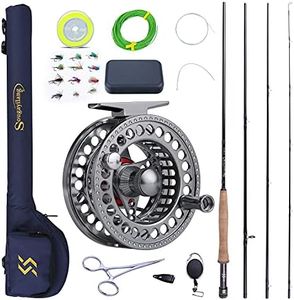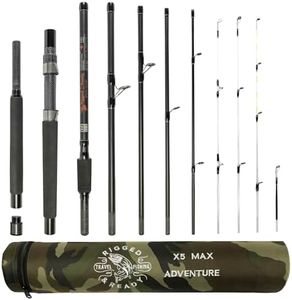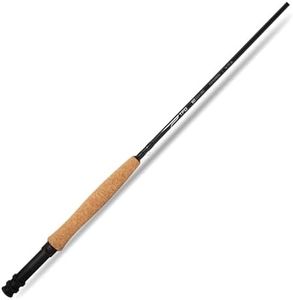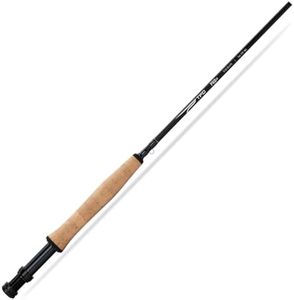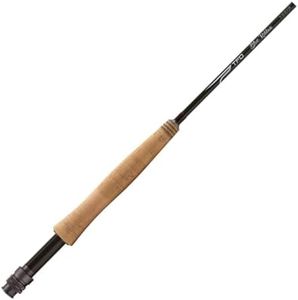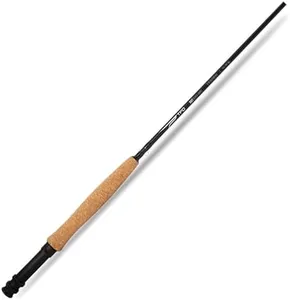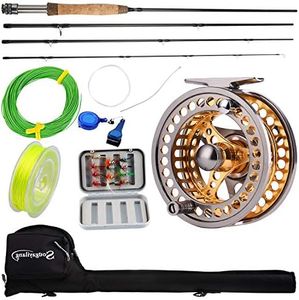We Use CookiesWe use cookies to enhance the security, performance,
functionality and for analytical and promotional activities. By continuing to browse this site you
are agreeing to our privacy policy
10 Best Fly Rods
From leading brands and best sellers available on the web.Buying Guide for the Best Fly Rods
Choosing the right fly rod is essential for enjoying your time out on the water. Fly rods come in many types, lengths, and strengths, designed for different fishing situations and experience levels. When picking a fly rod, think about where and what you'll fish for, how comfortable you want your casting to be, and how much versatility you need. Understanding the main factors will help you make a confident and satisfying choice.Rod LengthRod length is typically measured in feet and greatly influences casting distance and control. Shorter rods (usually under 8 feet) are easier to handle in tight spaces, like small streams with lots of brush, and give you more control for shorter casts. Medium-length rods (about 8 to 9 feet) offer good balance between distance and control, making them versatile for many situations, from rivers to small lakes. Longer rods (over 9 feet) offer longer casts and more line control, which is helpful for big rivers or when fishing from boats. Consider the size of the water you’ll fish and your physical comfort—shorter rods for close quarters, longer rods for open spaces.
Rod WeightRod weight refers to the size of the fly line the rod is designed to cast, which usually ranges from 1 (ultralight) to 12 or higher (heavy). Lighter weight rods (1-4) are best for small fish and gentle presentations, suitable for trout in streams and small rivers. Medium weights (5-7) are the most versatile for average-sized trout, bass, and similar fish in larger rivers or lakes. Heavier rods (8 and up) are for bigger fish like salmon, pike, or saltwater species, where a stronger rod is needed to handle powerful casts and fights. Match the rod weight to the fish size and fishing conditions you expect most often.
Rod ActionRod action describes how much and where a rod bends when casting or fighting a fish. Slow action rods bend throughout the whole length, which provides gentle, flexible casting and is good for delicate presentations or beginner anglers. Medium action rods bend more in the middle, offering a mix of power and softness, making them a good all-around option. Fast action rods only flex at the tip, creating crisp, long casts and better control in wind or for larger fish, but they require more precise timing. Pick slow action for gentle, close-up fishing, medium action for versatility, and fast action for distance casting or windy conditions.
Rod MaterialMost modern fly rods are made from graphite, fiberglass, or bamboo, affecting the rod's weight, durability, and feel. Graphite rods are lightweight, strong, and sensitive, making them the most popular all-purpose choice for beginners and experienced anglers alike. Fiberglass rods are heavier and more flexible, offering a slower action that's easy to learn with and popular for small stream fishing. Bamboo rods have a classic feel and beauty, but tend to be heavier and more expensive, often chosen by collectors or enthusiasts. Choose graphite for a light and responsive rod, fiberglass for a softer and more forgiving experience, and bamboo for tradition and craftsmanship.
Handle/Grip TypeThe handle or grip affects comfort during long fishing days and the amount of control you have while casting. Standard grip shapes include cigar, half-wells, and full-wells, with cigar grips often found on lighter rods for smaller fish, half-wells being a balanced choice for medium rods, and full-wells grips providing firm hold for heavier rods and longer casts. Select the handle that feels natural in your hand and matches the typical rod weight you plan to use.
Number of SectionsFly rods come in different numbers of pieces, ranging from one-piece (rare and difficult to transport) up to eight pieces, but most commonly in two, three, or four sections. More sections make the rod easier to pack and transport without sacrificing much performance. Two-piece rods are simpler and sometimes slightly stronger, but four-piece rods are far easier to carry for travel. Choose a rod with more sections if you plan to travel or hike to fishing spots.
